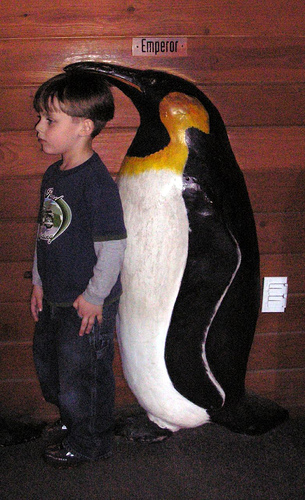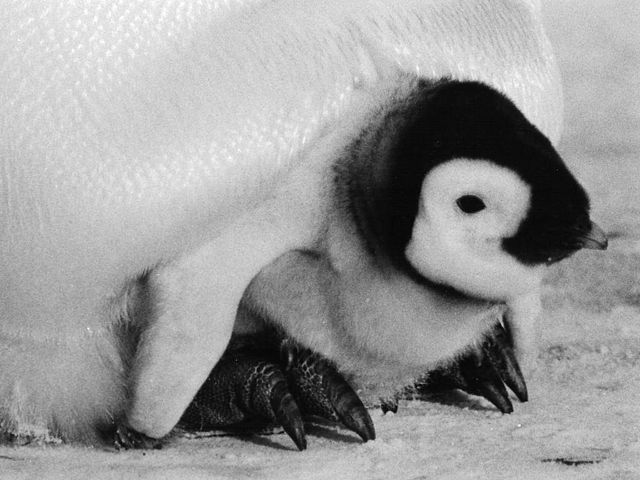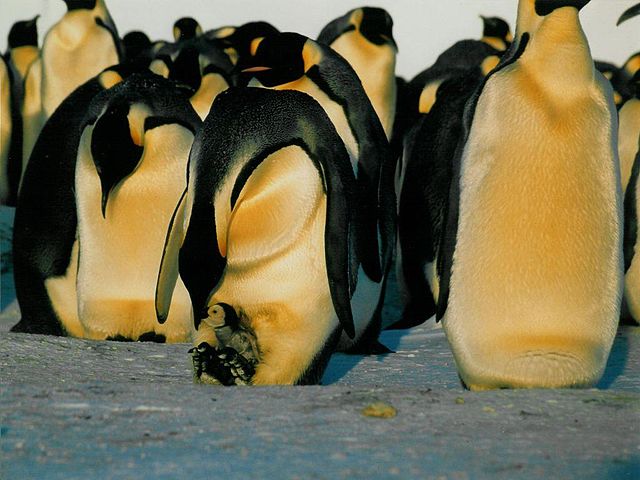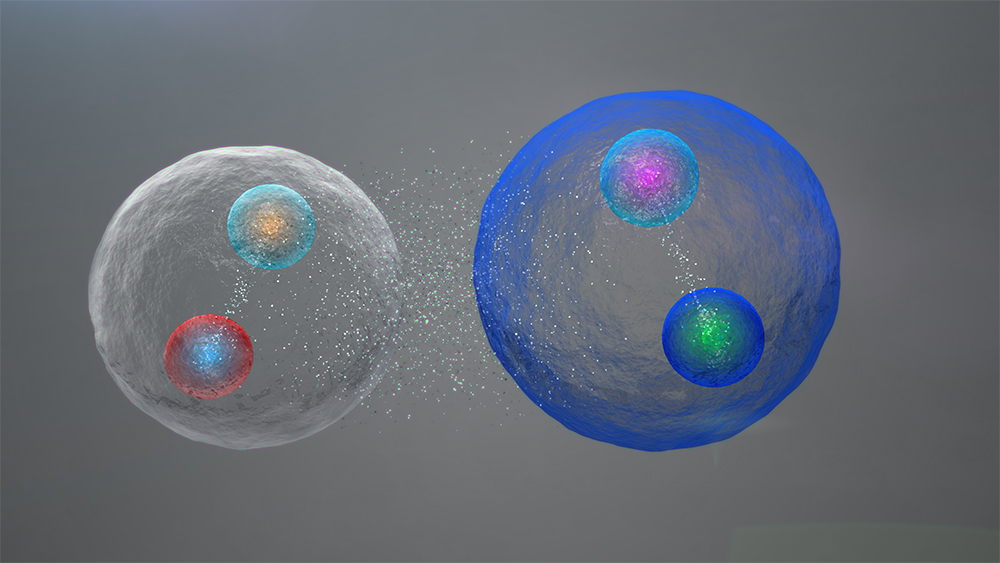These funny birds cannot fly, but swim through icy waters as fast as a speedboat.
They can dive in the water, go as deep as 30 ft and then zip out of the water as if they never dived in.
They make nests, but the strange thing is that they do not use any twigs, they use stones!
Yes, penguins are indeed very unusual birds and that is what makes them special. And even more special of them all are the Emperor Penguins.

There are in all 17 species of penguins that are documented. The largest of those is the Emperor Penguin, that stands at 1.15 m (45 in.) tall and weighs around 30 kg. It is found in the Southern hemisphere in Antarctica.
So how do these penguins survive in such harsh winter? Over time their bodies have changed or adapted to be able to live in such surroundings. Their blood cells have a special type of hemoglobin that allows them to survive at low oxygen levels. They have solid bones to be able to bear the effects of low pressure. They can also shut-down a few non essential organs so that they can conserve their energy for longer.
Their favorite food is fish, and fish :). Although sometimes they may also enjoy krill and squids.
It is very interesting that the Emperor Penguins choose the winter season to lay eggs. All the penguins reach the breeding grounds. Once the mother penguin lays the eggs, she hands over the egg to the father penguin who then incubates the egg. She then leaves to hunt for the fish. The egg has to be kept sheltered. The father Emperor penguins have a warm layer of feathered skin called a brood pouch. The father is extremely careful in keeping the egg warm. So he balances the egg on his feet and covers it with his pouch.

When the weather gets very rough the penguins use a technique called huddling. They huddle in a group and take turns moving towards the inside of the pack, where it is warmer, thereby keeping the entire group warm, but turn by turn.

As soon as a baby penguin is hatched the mother returns, feeds the hatchling food from her mouth. How do they get to know when the baby is born? Nobody knows! Then the fathers start going out hunting for food and the mother takes care of the young chicks. In a few months the juveniles leave the shelter of their mothers’ brood-pouches and start moving in chick groups called crèches.
Mamas get free to hunt for fish now :)
By the time it is December (when it gets warmer in Antarctica – remember the Southern Hemisphere) the ice starts to melt and the younger chicks are ready to hunt for fish themselves.
Emperor Penguin’s predators include birds and aquatic mammals, like Leopard seal and Orca.
We all know that penguins are flightless birds but did you know that they could once fly?
Check out this amazing video of Emperor penguins in their habitat –
http://www.youtube.com/watch?v=6AiCIZ9wM1o
Read an interesting story about penguins and cactus :)





Leave a Reply